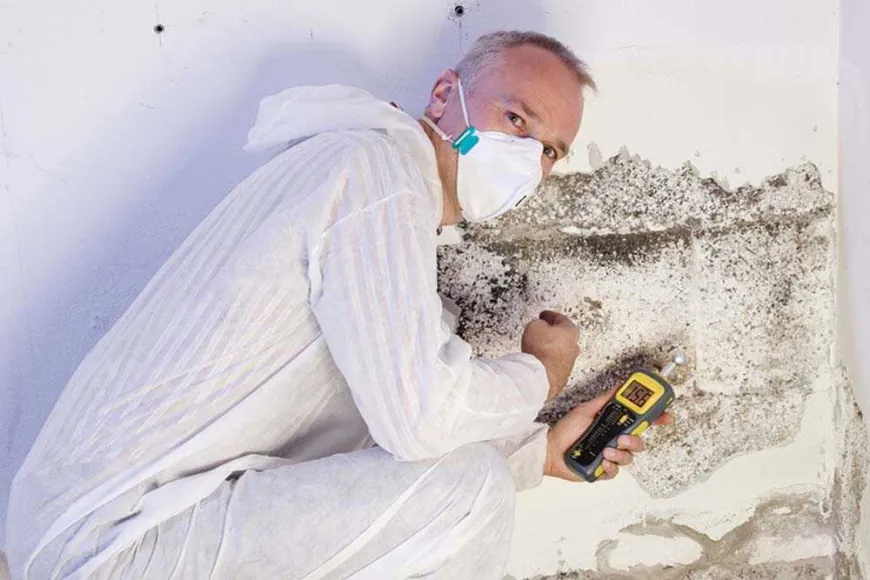How Do Experts Test for Mold?

Mold is a common household issue that can lead to significant health problems if left unchecked. It thrives in damp environments and can spread quickly, often going unnoticed until it becomes a major concern. When mold is suspected, it's essential to bring in professionals to assess the situation. But how exactly do Expert Mold Inspection Services in Doral FL. In this blog post, we’ll explore the various methods mold specialists use to identify mold growth and ensure proper remediation.
1. Visual Inspection
The first step in mold testing is usually a thorough visual inspection. Mold can often be identified by its appearance: it tends to grow in dark, damp areas like basements, bathrooms, or behind walls. Common signs include:
- Discoloration on walls, ceilings, or floors (often black, green, or white patches)
- Musty odors
- Water damage, stains, or leaks
- Fuzzy or powdery textures on surfaces
While some mold growth is visible, it can also hide behind walls, under carpets, or in less accessible areas. That’s why visual inspection alone is not always sufficient to determine the full extent of the issue.
2. Moisture Mapping
Mold thrives in moist environments, so one of the first things experts do after a visual inspection is moisture mapping. This technique involves using moisture meters and infrared cameras to identify areas of excessive moisture that may be conducive to mold growth.
Moisture meters measure the water content in materials like wood, drywall, or concrete. If elevated moisture levels are found, this indicates a high likelihood of mold growth nearby.
Infrared cameras detect temperature differences in walls and other surfaces, helping experts find hidden moisture and leaks that might not be visible to the naked eye.
By locating the source of moisture, mold specialists can determine where mold is most likely to grow, even if it’s not yet visible.
3. Surface Testing (Swab and Tape Sampling)
If mold is visible or suspected on a surface, experts may perform surface testing to confirm the presence of mold and determine the type of mold present.
-
Swab sampling: A sterile cotton swab is rubbed over a suspected moldy area, collecting a sample that can be analyzed in a lab for mold spores.
-
Tape sampling: A clear adhesive tape is pressed onto the surface to collect mold spores, which are then examined under a microscope to identify the species of mold.
These surface tests help experts understand what kind of mold is present, which is crucial for determining the appropriate treatment and understanding any health risks associated with the mold type.
4. Air Sampling
Mold spores are microscopic and can easily become airborne, especially when disturbed. Air sampling allows experts to measure the concentration of mold spores in the air, both inside and outside the property.
There are two primary types of air sampling:
-
Spore traps: These devices pull in air and capture mold spores on a sticky surface or inside a filter. The sample is then sent to a lab, where the mold spores are counted and analyzed.
-
Airborne particle collectors: These are high-tech devices that filter and collect airborne particles, including mold spores, for later analysis.
Air sampling helps determine whether mold is circulating in the air, which is important for assessing the risk of respiratory problems for building occupants. If indoor mold spore counts are significantly higher than outdoor counts, it indicates a mold issue inside the building.
5. Bulk Testing
In some cases, experts may use bulk testing to examine large materials (such as sections of drywall, carpet, or insulation) that are suspected of being contaminated with mold. These samples are taken from the home and analyzed in a lab.
Bulk testing is useful for determining the concentration and type of mold in a specific material. It’s often done when mold contamination is extensive, or when it’s necessary to assess the effectiveness of remediation efforts.
Conclusion
Mold testing is a crucial part of addressing mold issues in homes or buildings. While mold may not always be visible, it can pose significant health risks if left untreated. North 2 South Home Inspections use a variety of testing methods, including visual inspections, moisture mapping, surface sampling, air sampling, and advanced testing techniques like ERMI and mycotoxin analysis to identify mold and assess its severity.












